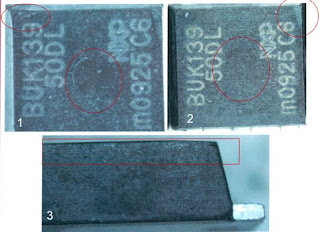A UK distributor had old stock of an IC that a customer
wanted. However the stock was in leaded format, and the customer needed it RoHS (lead
free).
The customer was suspicious of the distributor’s ability to do
this but having limited options decided to proceed but he needed guarantees. Retronix fixed this issue as a guarantor by going through the process with the customer.
- Chemical strip back of leaded device legs
- Auto replating of RoHS compliant solder coating
- XRF Test to ensure compliance
We then made an agreement deal whereby distributor/Retronix supplied
the parts in batches, with the customer only paying when devices were
successfully placed, eliminating the risk.
Retronix
has invested in the latest automated retinning technology
to ensure the highest levels of process repeatability and
quality for alloy conversion or alloy refreshing.
For more info -
Know more about Retronix | CLICK HERE |
We welcome you to join our LinkedIn group | CLICK HERE |
Contact us : | CLICK HERE | info@retronix.com | sales@retronix.com
YouTube | LinkedIn | Twitter
Know more about Retronix | CLICK HERE |
We welcome you to join our LinkedIn group | CLICK HERE |
Contact us : | CLICK HERE | info@retronix.com | sales@retronix.com
YouTube | LinkedIn | Twitter









